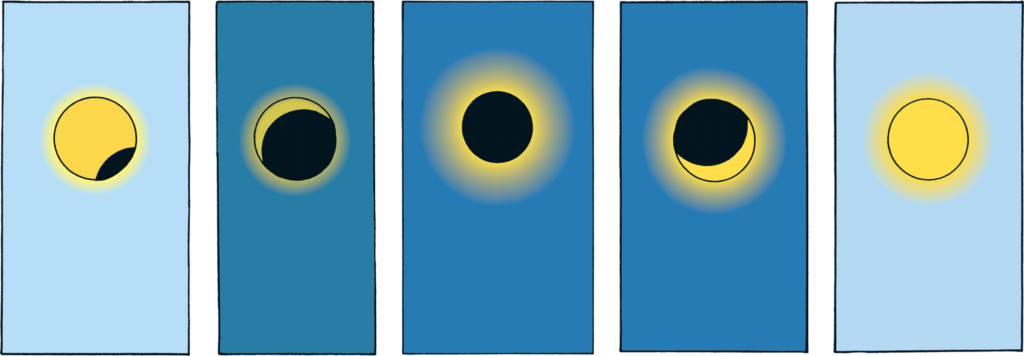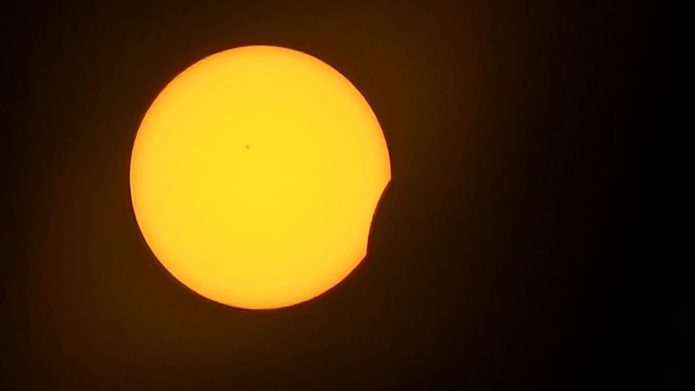Friends and family have watched the eclipse and sent pictures. All of them have squares atop their noses and face the sky. For the world that is so much into perpetually peering down into phones, this is quite a change.
Ever since I saw Alaska airlines’ interest in eclipses, I have been intrigued enough to consider travelling to catch an eclipse. The next big eclipse that I am excited about is happening on August 2027, over the Pyramids. That is perhaps something to be present for. That’s some time away.
When I think of how it all started, my awe of eclipses did not happen in a classroom. By the time I got to understand what it really was, it got a hazier tint. And no geography teacher could have done what Tintin did!
It was in Prisoners of the Sun, that Tintin gets to Peru. When on track to be executed, he commands the Sun to disappear much to the bewilderment of the locals. Of course, the knowledge of the eclipse coming in was masterfully used.
Much later, I learnt that this technique was not something that is something that Tintin came up with!
Krishna used it in the Mahabharata war. (And then, Chanced upon this paper recently).
Christopher Columbus & the Spanish used the knowledge of an eclipse in their conquest of America.
The battle of Halys resulted in a negotiated treaty after the eclipse.
Here’s a list of 6 eclipses that have influenced history.
With each additional story that I came to soak up, there came more interest in eclipses. The whole drill of wearing some fancy glass and peering into the Sun as it disappears and reappears was, and continues to be magical.
As kids, we were not allowed to watch eclipses! There were all kinds of reasons. And so, we ended up watching eclipses, half in protest!
Eclipsed? 🙂
Back to Tintin and Prisoners of the sun. It continues to be a favourite. And that status did not dim because I learnt later that it had an error in it. A kid pointed out to Herge that his depiction of the Eclipse in the Prisoners of War was not quite accurate!
“Hergé borrowed various elements from Gaston Leroux’s book Wife of the Sun, for the crucial eclipse scene, in the same way that La Fontaine borrowed from Aesop. He was equally inspired by the text from the book Christopher Columbus by C. Giardini, published by Dragaud, Paris, in 1970, in which the author describes how the Spanish succeeded in forcing the natives to submit completely thanks to a lunar eclipse which had been announced in a calendar.
© Hergé / Tintinimaginatio – 2024

It is also interesting to point out a mistake regarding the eclipse. In the book the eclipse moves from right to left, whereas in reality it should travel from left to right because Peru is in the southern hemisphere. This mistake was pointed out to Hergé by a child who wrote a long letter expressing his dissatisfaction.”
You could be the smartest of people in a room. All it takes is a child or a childlike curiosity to eclipse you.


